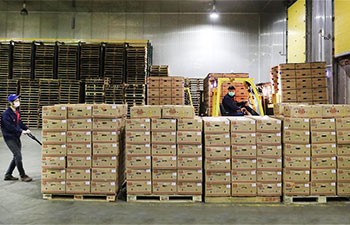CHICAGO, Feb. 25 (Xinhua) -- Three scientists from the University of Chicago (UChicago) believe there may be a way to make a material that could conduct both electricity and energy with 100-percent efficiency, never losing any to heat or friction.
The breakthrough, posted on UChicago's website this week, has been published in Physical Review B.
The scientists started out thinking that the two properties might be incompatible in one material. "But to our surprise, we found the two states actually become entangled at a quantum level, and so reinforce each other," said the paper's co-author and research adviser David Mazziotti, a professor of chemistry and an expert in molecular electronic structure.
Mazziotti then began plugging different combinations into a computer model. "We scanned through many possibilities, and then to our surprise, found a region where both states could exist together."
It appears that in the right configuration, the two states actually become entangled, a quantum phenomenon in which systems become intangibly linked together.
Using some advanced mathematics, the scientists showed that thanks to the quantum entanglement, the dual condensates should theoretically exist even at the macroscopic size, which is visible to the human eye.
"This implies that such condensates may be realizable in novel materials, such as a double layer of superconductors," said UChicago graduate student LeeAnn Sager.
This may open a new field of dual exciton and fermion pair condensates. The scientists are working with experimental groups to see if the prediction can be achieved in real materials.
"Being able to combine superconductivity and exciton condensates would be amazing for lots of applications: electronics, spintronics, quantum computing," said Shiva Safaei, the paper's third author and a postdoctoral researcher. "Though this is a first step, it looks extremely promising."

















